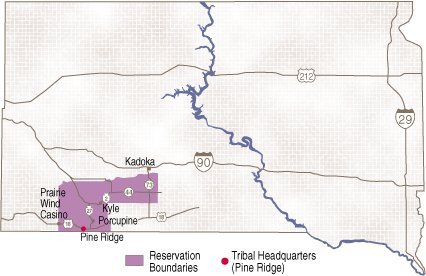
August 02, 2002
By Heidi Bell Gease,
Rapid City Journal
MANDERSON, South Dakota --
The third time was a charm for Alex White Plume and his family
as they quietly harvested their first crop of industrial hemp this week.
"It really felt good," White Plume said Friday. "Just like a sense of relief."
This was the third straight year the White Plume family planted
hemp on their land near Manderson.
Two years in a row, federal agents confiscated the plants before they could
be harvested,
although the U.S. government did not file any charges against any of the White
Plumes,
who planned to produce and sell hemp oil and other products from the plants.
This time, family members beat government agents to the punch.
They harvested most of the 3.5-acre crop Monday night.
"They weren't that tall, but they were done pollinating," White Plume said.
"So we took some out, we cut it and it's dried."
The dried hemp already has been sold to Madison Hemp & Flax Co. of Lexington,
KY.,
which joined with the Kentucky Hemp Growers Cooperative Association
to ship a trailer full of Canadian hemp to the Pine Ridge Indian Reservation
after the White Plumes' first crop was confiscated in 2000.
That hemp was to be used for bricks in a hemp house.
Industrial hemp is a form of the cannabis sativa plant, also known as marijuana.
Unlike marijuana, hemp cannot be smoked to get high.
But it can be used to make everything from rope to paper to cloth to soap to
animal feed,
and it requires little water.
White Plume said the seeds they planted contained little or no tetrahydrocannabinol,
the ingredient in marijuana that produces a "high."
Federal laws do not distinguish between hemp and marijuana,
making it illegal to grow either one (although hemp can be legally imported).
But in 1998, the Oglala Sioux Tribal Council voted to legalize hemp.
Tribal members say that because the Oglala Sioux Tribe is a sovereign nation,
its laws should apply on the reservation.
The Kentucky buyers will visit the White Plumes on Wednesday,
Aug. 14, to pick up the hemp.
That same day, the public is invited to attend a harvest celebration
and symbolic harvest of one small hemp plot.
All are welcome, White Plume said, and thanksgiving ceremonies will begin about
10 a.m.
He has already heard from people all over the country who are interested in
attending.
"I can't figure out how they hear about it," he said.
"Somebody's spreading the word."
This year's hemp crop was not as impressive as in years past, when plants grew
to 12 or 13 feet tall.
The drought kept this year's plants to half that size.
But White Plume pointed out that tall prairie grasses grew only about a foot
this year,
so the hemp plants "still outgrew everything around."
"I think they were meant to be here," he said.
White Plume would not say how much hemp was harvested,
but he said it was basically a symbolic amount.
"This was a contract between our family and that company from Kentucky," he
said.
"We just wanted to keep our word that we could deliver.
It took a long time, but we kept our word."
There was at least one benefit to the raids of 2000 and 2001.
When it came time to harvest this year's crop, the White Plumes knew what to
do.
"I used a Weed Eater," White Plume said.
"I learned that from the Bureau of Indian Affairs and the FBI."
Questions or comments on this story?
Call reporter Heidi Bell Gease at 394-8419,
or e-mail her at heidi.bell@rapidcityjournal.com.
